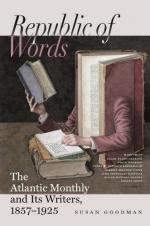Every unprejudiced reader will admit, that in emblem, name, character; and appearance, John Florio and Menalcas are allegorically identical; and it follows, as a consequence, that Rosalinde, married to the same person as Rose Daniel, is one and the same with her anagrammatic synonyme,—and that her sorrows and joys, arising out of the conduct of her husband, must have had the same conditions.
Having identified Rosalinde with Rose Daniel, it may be thought that nothing further of interest with respect to either party remains, which could lead us into further detail;—but Spenser himself having chosen, under another personification, to follow the married life of this lady, and revenge himself upon the treachery of her husband, we should lose an opportunity both of interpreting his works and of forming a correct estimate of his character, if we neglected to pursue with him the fortunes of Mirabella. Like her type and prototype, we find that she has to suffer those mortifications which a good wife cannot but experience on witnessing the scorn, disdain, and enmity which follow the perversity of a wayward husband. Such, at least, we understand to be the meaning of those allegorical passages in which, as a punishment for her cruelty and pride, she is committed by the legal decree of Cupid to the custody and conduct of Scorn and Disdain. We meet with her for the first time as:
“a fair maiden clad in mourning
WEED,
Upon a mangy JADE unmeetly set,
And a leud fool her leading thorough dry and wet.”
Again she is:
“riding
upon an ass
Led by a carle and fool which by her side
did pass.”
These companions treat her with great contempt and cruelty; the Carle abuses her:
“With all the evil terms and cruel mean
That he could make; and eke that angry fool,
Which followed her with cursed hands uncleane
Whipping her horse, did with his smarting-tool
Oft whip her dainty self, and much augment her dool.”
All this, of course, is to be understood allegorically. The Carle and Fool—the former named Disdain, the latter Scorn—are doubtless (as in the case of Holofernes and Armado) the double representatives of the same person. By the ass on which she rides is signified, we suppose, the ridiculous position to which marriage has reduced her haughty beauty; the taunts and scourges are, metaphorically, the wounds of injured self-respect.
The Carle himself is extravagantly and most “Resolutely” painted as a monster in nature,—stern, terrible, fearing no living wight,—his looks dreadful,—his eyes fiery, and rolling from left to right in search of “foeman worthy of his steel”; he strides with the stateliness of a crane, and, at every step, rises on tiptoe; his dress and aspect resemble those of the Moors of Malabar, and remind us forcibly of the swarthy Menalcas. Indeed, if we compare this serio-comic exaggeration of the Carle with the purely comic picture of Don Armado given by Holofernes, we shall see at a glance that both depict the same object of ridicule.




